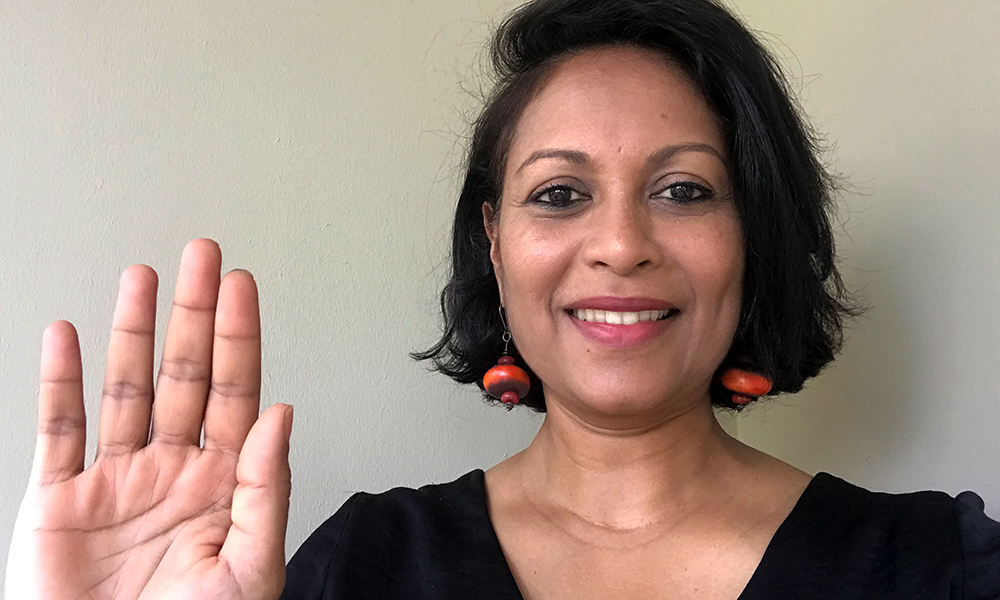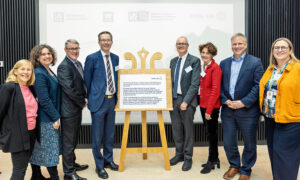
Opinion: Allyship and Women in Science
Roshni Mooneeram discusses what Equality, Diversity and Inclusion (EDI) is to her, and what the meaning of allyship is

By Roshni Mooneeram, EMBL Equality, Diversity and Inclusion Officer
To me, Equality, Diversity and Inclusion (EDI) is an approach and a practice for restoring human fairness, dignity and justice in the workplace and in society. By this very definition, a necessary condition for its success is allyship: a conscious effort by more privileged groups in society to support and advance the interests of others outside their group. In relation to gender equity in particular, while women have made great strides in science, change is slow. We take one step forward then encounter two systemic hurdles causing resistance. Progress will continue to be slow unless we get men on board and invested in the equality discussion.
One of the reasons why gender equity programmes do not always work is because they leave men out. Are we making sure that men understand how everyone including themselves, would benefit from gender equity? Some men feel out of their depth in relating to women in the workplace and are concerned that things they say or do may be branded as sexist. Others simply do not feel that gender equity or events such as International Women’s Day (IWD) are of relevance to them. This is why training in EDI awareness is key for an organisation. We need to make sure that everyone understands that gender parity will not leave anyone behind, it does not harm one group of people, and no one group is being targeted as ‘the enemy’. Making the workplace fairer for everyone does not equate to replacing norms that have excluded women for centuries with norms that exclude other groups. Everyone has a role to play in order to create a shared set of values and to make an inclusive environment. Allyship can help convert resistance into a lever.
Allyship can also help us move on from seeing EDI as a problem to be fixed, and instead see the untapped possibilities. Of course, gender equality remains a massive challenge. The World Economic Forum predicts that it will take another 99.5 years before we achieve gender parity. But there is also an opportunity to be grasped by using the workplace as a catalyst. The theme for IWD 2021 is Choose to Challenge (#ChoosetoChallenge), and an area of high impact is choosing to challenge notions of leadership that are bound up with traditional notions of masculinity. When we operate in a spirit of allyship and get everyone on board, men might also see that an alpha male leadership culture is not helpful to anyone and that stereotypical leadership styles and behaviours need to be revised. There is an opportunity to create shared space for men, women, and non-binary people, and to generate a new leadership culture together, around the human values of respect, dignity, and inclusion. Allyship takes the pressure away from women having to challenge disabling patriarchal norms on their own – an impossible task.
Allyship, for me, also takes the form of a necessary bridge between the natural sciences on one hand, and the human and social sciences on the other. In the Strategic Plan for the Education of Girls and Women in Africa 2021–2025 that I wrote for the African Union before joining EMBL, a key recommendation was to fund and strategise girls and women in the more inclusive STEAMM rather than STEMM disciplines, with the A standing for the arts/humanities and social sciences. Even the most cognitively talented female scientist can only go so far unless she is also equipped with the tools to challenge patriarchal norms and to help generate new ones, from a place of being in her own power. This is where training that leverages high emotional intelligence, empathy, awareness and self-awareness in developing inclusive leadership is key.
Allyship also means taking cross-sectionality into account as we celebrate IWD, and ensuring that we are simultaneously challenging the stereotypes relating to ethnicity, age, disability, socio-economic status, neurodiversity, and other protected characteristics that may also lead to marginalisation of women.
Having a woman at the head of EMBL, Europe’s flagship institute in the life sciences, is already a powerful challenge to gender stereotypes in science and, rightly, there is a lot of hope pinned to this regarding gender equity at EMBL. I believe that the workplace can be a catalysing factor and that we will not have to wait another century for gender equality, but for the latter to become a lived reality. Challenging stereotypes is a task that everyone must own.
Between International Day of Women and Girls in Science, 11 February, and International Women’s Day, 8 March, EMBL encourages individuals and groups to strike the #ChooseToChallenge pose with your hand high and show your commitment to choosing to challenge inequality, pledging to call out bias and actively question stereotypes. Share your pledge on Twitter using #ChooseToChallenge and tag @EMBL.


